Aircraft’s Background
This T-33 Shooting Star was manufactured at Lockheed Aircraft in Burbank, California. The aircraft was delivered to the Air Force on October 15, 1955 and remained in service with the Air Force until 1965 when it was dropped from their inventory.
The T-33 was then picked up by an unknown government agency before being transferred to the University of Illinois Institute of Aviation for hydraulic training purposes. 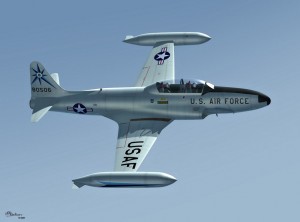 In May of 1993, the Prairie Aviation Museum was able to obtain this aircraft from the University of Illinois to be used as a static display.
In May of 1993, the Prairie Aviation Museum was able to obtain this aircraft from the University of Illinois to be used as a static display.
Interactive Display
Click on a colored PIN to display additional information (text, video, recording, images).
This feature is an extra benefit as you walk around the display in our Airpark.
WIFI is provided for your mobile device. A network QR code or name/password is provided at the desk.
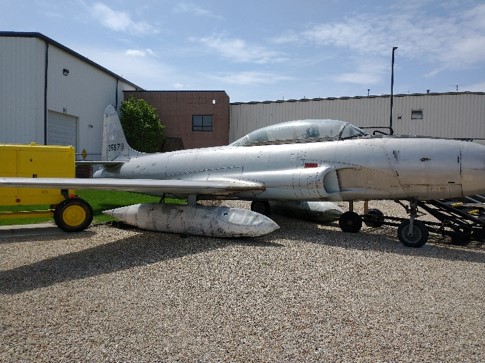


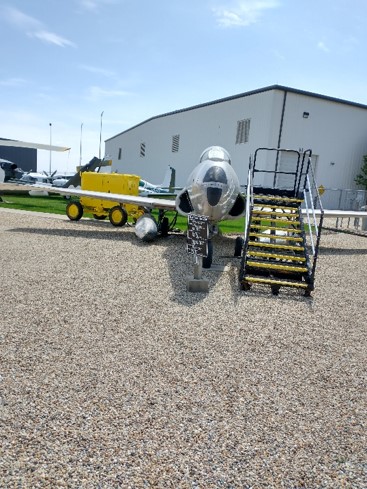


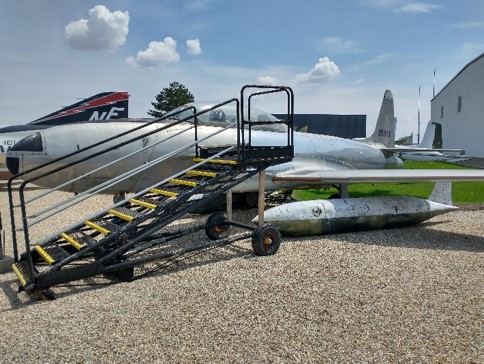



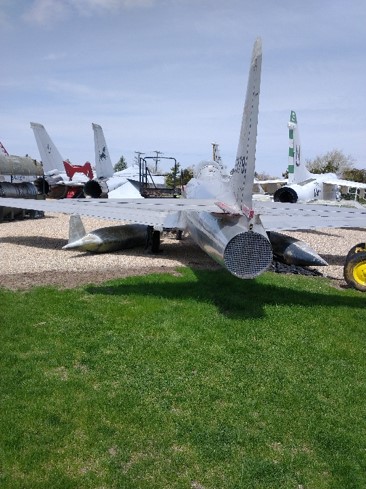

Videos of Interest
Video #1: T-33 “Ace Maker II” Aerobatics – Melbourne Air and Space Show 2017 Run Time (0:05:32)
Video #2: Mig-15 & T-33 Shooting Star – Duxford Battle of Britain Airshow 2019 Run Time (0:09:41)
Video #3: Freewing T-33 Shooting Star WRING OUT FLIGHT review USAF 80mm EDF Jet Run Time (0:05:24)
Video #4: Pilot Logbook – Greg Colyer, “Acemaker” Lockheed T-33 Shooting Star Run Time (0:03:41)
Special interview: LOCKHEED T–33 SHOOTING STAR: TAMING THE T-BIRD FLYING AMERICA’S FIRST JET TRAINER (Text/Story/Embedded Video – Run Time 0:07:03)
History
Originally designed the TF-80C, the two-place T-33 jet was built by Lockheed Aircraft and first produced in 1948 and continued until August 1959 with 5,691 T-33s built.
It is a longer version of the historic P-80 (F-80) Shooting Star, our nation’s first operational jet fighter (and the first to score a victory in all-jet combat when one downed a MiG-15 early in the Korean War). An additional three feet was added to the fuselage, plus a second seat and dual controls, to provide the Air Force with a trainer. Prior to these modifications, there were no aircraft available in which to instruct pilots about the then-new jet technology of the late ’40s.
In addition to its use as a trainer, the T-33 has been used for such tasks as drone director and target towing, and in some countries as a combat aircraft. The RT-33A version, reconnaissance aircraft produced primarily for use by foreign countries, had a camera installed in the nose and additional equipment in the rear cockpit.
The T-33 was used by the USAF, U.S. Navy, and over forty nations around the world. Lockheed built 5,691 T-33s by August, 1959. Production continued under license in Canada and Japan with another 866 examples being produced. The T-33 was produced as the DT-33 (drone director), the RT-33 ( recon version), and the AT-33A ( light attack version). The Shooting Star continued to be used by Air National Guard units until 1994. It is still operated by some foreign nations.
ROLE: Trainer
Crew: Two
SPECIFICATIONS
Engine: Allison J-33 of 5,400 lbs. thrust
Span: 37 ft. 6 in.
Length: 37 ft. 8 in.
Height: 11 ft. 7 in.
Empty Weight: 8,084 lbs
Maximum Takeoff Weight: 11,965 lbs.
Armament: Two .50-cal. machine guns in nose
PERFORMANCE
Maximum speed: 525 mph
Cruising speed: 455 mph
Service Ceiling: 47,500 ft
Previous Duty Stations
T-33A Shooting Star
Bureau Number :35979
| 13 Oct 1955: | Entered into USAF inventory. |
| Oct 1955: | 26th Air Divison(Defense), Mitchel AFB LI NY( deployments to Selfridge AFB MI and Offut AFB NE) |
| Feb 1959: | 4626th Air Base Squadron, Topsham AFS. Brunswick ME |
| Jul 1962: | 4626th Support Squadron, Topsham AFS |
| Mar 1965: | Dropped from USAF inventory by transfer to another goverment agency, possibly US Navy |
| ??? ????: | Other agency transferred to University of Illinois Institute of Aviation. |
| May 1993: | Transfered to Prairie Aviation Musuem from University of Illinois. |
